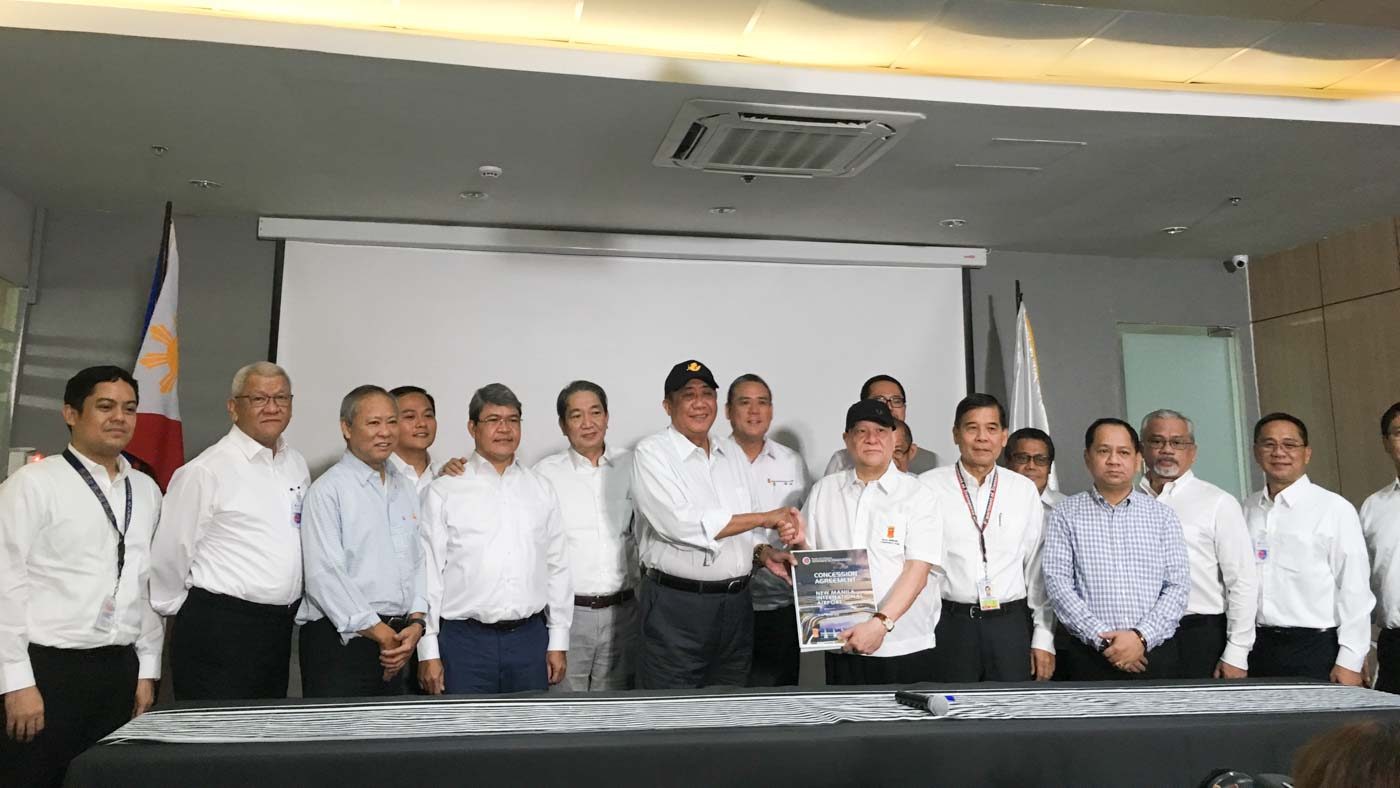SUMMARY
This is AI generated summarization, which may have errors. For context, always refer to the full article.

MANILA, Philippines – The Department of Transportation (DOTr) and San Miguel Corporation (SMC) signed a contract for the $15-billion Manila International Airport on Wednesday, September 18, bringing the building of an alternative to the congested Ninoy International Airport (NAIA) one step closer.
The construction will be fully funded by private equity, with no government guarantee or subsidy. The 50-year concession agreement also puts SMC in charge of the airport’s operations and maintenance.
During the bidding in July, no other firms challenged SMC’s proposal.
The airport will be constructed on a 2,400-hectare property in Bulakan, Bulacan, allotting space for 4 runways, 8 taxiways, and 3 passenger terminals.
SMC President and Chief Operating Officer Ramon Ang said the airport was designed this way to allow for flights to land and take off simultaenously.
DOTr Secretary Arthur Tugade said that the addition of this airport to the NAIA and the Clark International Airport will make way for “commercial competitiveness” and contribute to the public’s freedom of choice in traveling.
The airport is expected to accommodate 100 million passengers per year, going up to 200 million if it is upgraded to have 6 runways.
During the concession agreement signing, Tugade also announced he had signed the Notice to Proceed, allowing SMC to begin construction.
According to Ang, groundbreaking is set for December. He also said that the 4 runways will be completed in 5 years.
Road network
Ang said the DOTr agreed to enter the construction deal with SMC on the condition that the airport express and tollways would not cause more congestion along existing roads.
Regarding this, Ang outlined a planned transportation system, which involves 5 roads leading to the airport: Cavite coastal road or the Manila-Cavite Expressway, two routes in the Skyway system, and respective routes from Meycauayan and Bocaue.
He also said a train will be built to transport passengers to key areas, namely Bulacan, Quezon City, Manila, Navotas, and Malabon.
Tugade affirmed the road network will guarantee mobility and connectivity to travelers.
Flooding concerns
With regard to concerns of the construction area being prone to sinking and flooding, Ang responded that plans are in place to pump out water and suck silt from the land.
He also said that surrounding rivers, specifically Tullahan, Meycauayan, and Malolos, will be cleaned within one year. According to Ang, they have already acquired equipment for river cleaning.
He added that these efforts will be done in cooperation with the Department of Environment and Natural Resources, the Department of Public Works and Highways, and the province of Bulacan.
Tugade said that these plans will be issued with environment clearance. – Rappler.com
Add a comment
How does this make you feel?
There are no comments yet. Add your comment to start the conversation.